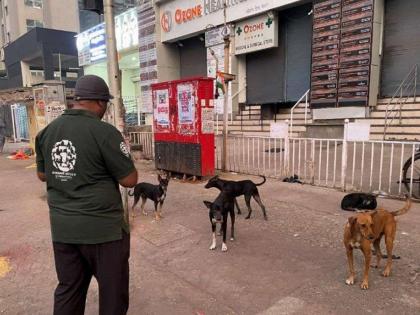Mumbai Sees 21.8% Decline in Stray Dog Density Over 10 Years, Says BMC-HSI Reports
By Amit Srivastava | Updated: April 3, 2025 19:16 IST2025-04-03T19:14:08+5:302025-04-03T19:16:10+5:30
Mumbai: A decade-long analysis of Mumbai’s stray dog population has revealed a significant decrease in overall dog density, despite ...

Mumbai’s Stray Dog Population Trends: 10-Year Survey Reveals Key Insights
Mumbai: A decade-long analysis of Mumbai’s stray dog population has revealed a significant decrease in overall dog density, despite localized increases in certain wards. The survey, conducted by the Brihanmumbai Municipal Corporation (BMC) in collaboration with Humane Society International/India (HSI/India), highlights the impact of Animal Birth Control (ABC) programs across the city.
According to the findings, Mumbai's stray dog population stood at 90,757 in 2024, down from 95,172 recorded in 2014. This translates to a 21.8% reduction in street dog density and a 27.4% decrease in slum areas over the past decade. The study, which surveyed approximately 930 km of Mumbai’s streets, found an average of 8.01 dogs per km in general areas, while slum areas reported a higher density of 224 dogs per square kilometer.
While 19 wards recorded a 31.6% decline in dog density, four wards—E, N, RS, and T—witnessed a 19.9% increase, and Ward D saw no change. Researchers suggest that this rise could be due to migration from outside Mumbai, inter-ward movement, or human activities such as feeding, which may boost pup survival rates.
The sterilization rate among Mumbai’s stray dogs stands at 62.9%, with female dogs showing a slightly lower rate of 61.7%. Interestingly, while the proportion of lactating females declined to 7.1%, the number of pups per surveyed area rose to 4.3%, indicating potential challenges in maintaining population control.
Seasonal Trends in Dog-Related Complaints
In addition to population trends, the survey examined dog-related complaints and bite incidents, which have generally declined since 1997. However, there was a noticeable spike post-pandemic in 2022. Data suggests that complaints peak during the monsoon season (July-August), when dogs exhibit more territorial behavior. However, bite incidents are more frequent in late winter and spring, coinciding with the whelping season.
Overall, the findings reinforce the importance of sustained ABC programs while emphasizing the need for further research into factors influencing dog density and human-canine interactions. The BMC and HSI/India plan to use these insights to refine future strategies for managing Mumbai’s free-roaming dog population.
Open in app